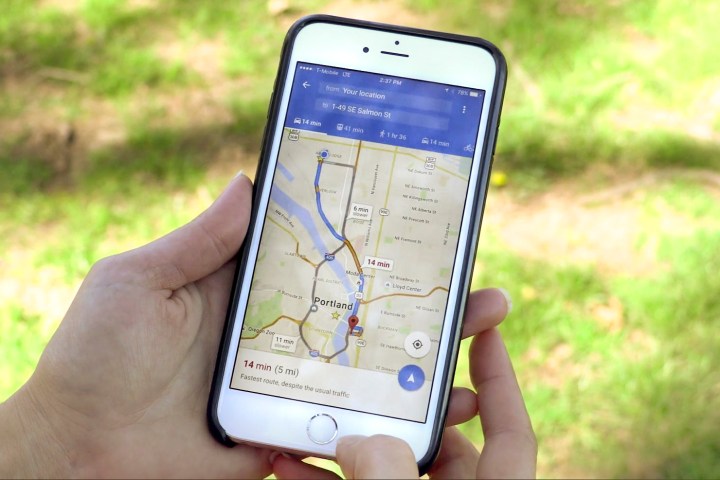
In Google’s Search app for iOS and Android, SOS Alerts will appear at the top of search results for the incident or location. Swiping up on the tab will show such information as emergency phone numbers, websites, and translations of useful phrases, plus related maps and top stories. You’ll see official alerts and tweets from first responders, too, and in some cases a timeline-like overview of the situation and donation opportunities.

SOS Alerts aren’t just limited to Google Search. They’ll appear in Google Maps, too, where you’ll see real-time updates on road closures, traffic slowdowns, and transit problems. A tappable icon on the map with more information will appear near the location of the crisis, along with a card containing helpful phone numbers, websites, and other info.
In some cases, Google will be a little more proactive. If you’re in or close to an affected area, you’ll get a notification on your smartphone that will direct you to the aforementioned news, maps, and resources.
Google isn’t rolling out SOS Alerts as a half-baked feature. The company says it has worked closely with organizations and government agencies “on the front lines of relief efforts,” including the Red Cross and the Federal Emergency Management Agency in the U.S., and agencies in other countries such as the Philippine Atmospheric Geophysical and Astronomical Services Administration, to supply SOS Alerts with real-time information.
Initially, SOS Alerts will be available in 12 locations, including the U.S., Canada, Australia, Japan, India, and Brazil. Google says a lack of local partners hindered the feature’s launch in the U.K. and other parts of Europe, but that it’s working to recruit more agencies and nonprofits in the coming months.

SOS Alerts may be Google’s latest crisis-monitoring efforts, but it’s not the only one.
Google used its Person Finder tool to help people check the status of loved ones in the aftermath of the 2011 earthquakes and tsunami in Japan. And it has deployed Crises Maps — toggleable Google Maps layers that highlight dangerous areas and emergency services — during Hurricane Sandy and other natural disasters.
Facebook, which offers a parallel service that lets members tell friends they’re safe, has been criticized for activating it under “inappropriate” circumstances. Google says it has set up a dedicated team to decide which events warrant an SOS Alert.
“We hope you never need to use crisis response features, but if you do, they’re designed to help keep you, and those you love, safe and informed,” Yossi Matias, vice president of engineering at Google, wrote in a blog post.
Editors' Recommendations
- Google is bringing Chrome browser to cars, even more EV features to Maps
- Google gives Maps’ Immersive View a boost and adds a new vibe feature
- Google brings powerful features to Samsung Galaxy S22 and Tab S8
- Google Maps is adding new shopping tools for the holiday season
- Google Maps expands super-useful feature for mass transit


